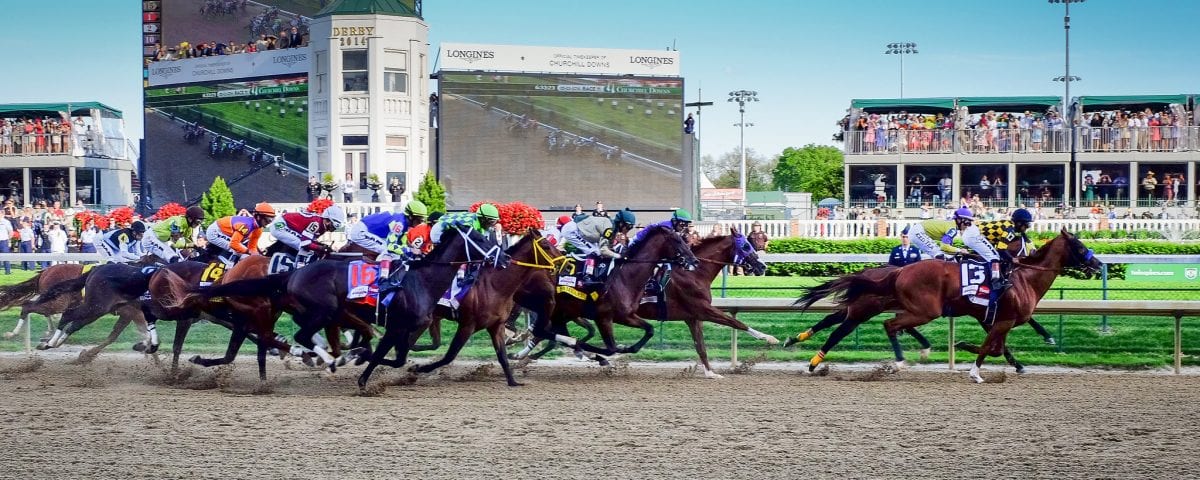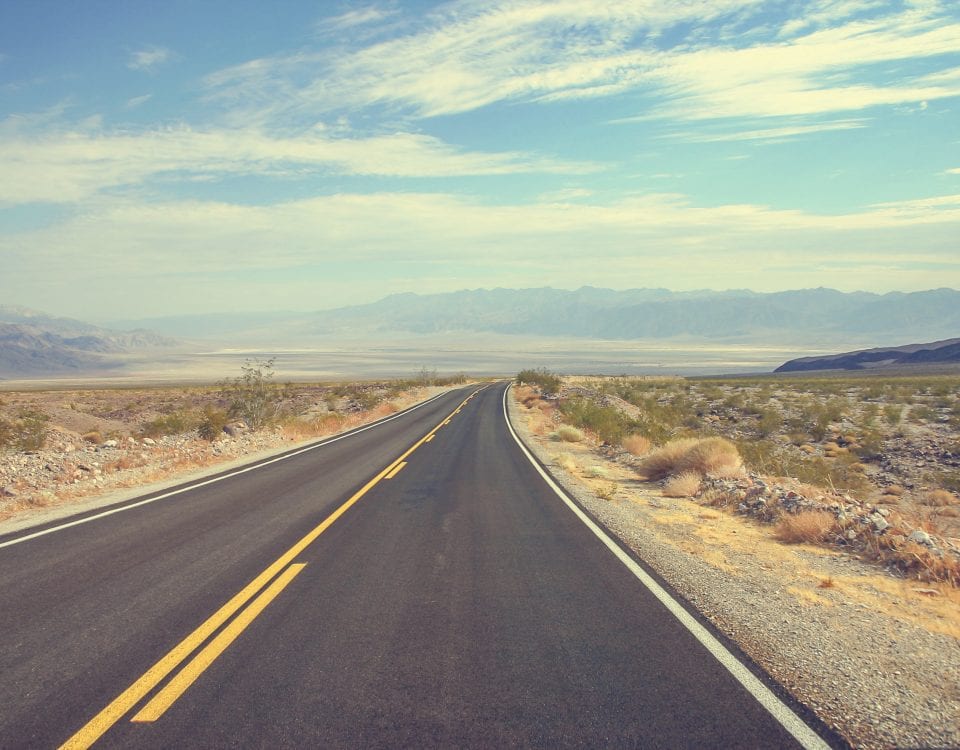
Day 22: Horses, Opioids and Chemicals
April 10, 2021
Day 20: Trekking Through Tennessee
April 8, 2021Most recently updated on March 21, 2024
Originally posted on April 9, 2021
Interstate 24 takes us in a northeasterly direction out of Nashville as we begin Day 21.
Nearly an hour into our drive, we reach the town of Clarksville.
You may have heard the name of this city from a popular song from the 1960s, but I know it as the place where my grandfather on my mother’s side was born.
This region of Tennessee was first inhabited by Paleo Native American tribes about 11,000 years ago. They were followed by the Archaic, Woodland and Mississippi cultures.
The first European settlers in this area purchased millions of acres of land from the Cherokee.
Clarksville was established in 1784. Much of the land was awarded to soldiers who had fought under General George Washington in the Revolutionary War. They received the land as part of their compensation for their wartime service. The new community was named after General George Rogers Clark, a Revolutionary War hero.
The pioneers of Clarksville took advantage of the rich soil here to grow dark-fired tobacco and used the Cumberland River to ship it elsewhere. In 1789, the town was selected as a tobacco inspection point.
In the 1800s, steamboats delivered hardware, coffee, sugar, fabric, glass and other products. In exchange, the town exported flour, cotton, tobacco and corn to places such as New Orleans and Pittsburgh on the Mississippi and Ohio rivers.
Tobacco production hit its height in 1858 when 18,000 hogsheads of the dark-fired product worth more than $2 million was shipped to international markets.
The arrival of the first railroad in 1859 enhanced the region’s economy.
During the Civil War, Fort Defiance and Fort Clark were built to protect the city. However, Union forces captured Clarksville in 1862 by sending boats down the Cumberland. A park and interpretive center now sit on the Fort Defiance site.
Today, Clarksville has 186,000 residents, making it the fifth most populous city in the state. The community has a mix of people with 55 percent being listed as white, 23 percent as Black and nearly 12 percent as Hispanic or Latino. Its median household income is $62,000 per year.
The town is served by the Leaf Chronicle, established in 1808 and the oldest newspaper in Tennessee. The Chronicle is part of the USA Today network, one of more than 200 digital-based local papers in 43 states that the national media company owns. More than 4,000 journalists live and work in the towns covered by these publications.
The Monkees, a pop band initially created for a television show in 1966, had a hit with the song “Last Train to Clarksville.” It’s generally thought the song is about a soldier from this town in Tennessee waiting at the railroad station for his girlfriend before being shipped off to the Vietnam War. However, the songwriters insist they didn’t have any specific town in mind. They simply liked the sound of “Clarksville.” The song had an anti-war message, including the line “I don’t know if I’m ever coming home.” However, the songwriters said they kept the protest nature quiet so the record would get play on the radio without any controversy.
Legendary guitarist Jimi Hendrix has ties to Clarksville. The musician was born in Seattle, but he lived in Clarksville while he was stationed at a nearby military base where he trained as an Army paratrooper. After his discharge, Hendrix formed a band called The Kings Casual and they began playing at spots in Clarksville. In 1965, Hendrix moved to Nashville and his career took off from there.
Olympian Wilma Rudolph was born in the Clarksville area in 1940, the 20th of 22 children her father had over two marriages. At an early age, she battled polio and scarlet fever. At one point, doctors told her she would never walk again.
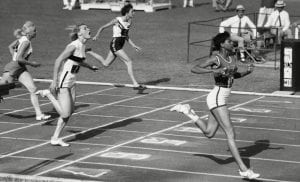
Olympic sprinting champion Wilma Rudolph was born in Clarksville, Tennessee. Photo by Britannica.
Rudolph did more than just walk. She became one of the greatest female Olympians, winning three gold medals in sprinting events at the 1960 Olympics. She was bestowed with the title of “fastest woman in the world.” When she returned home, she insisted her homecoming parade be integrated.
Rudolph died near Nashville from brain cancer in 1994 at the age of 54. She is buried in a cemetery near Clarksville. A statue of Rudolph sits outside the Wilma Rudolph Event Center.
As I mentioned, Clarksville is also the birthplace of my grandfather, Ed Hendrickson. He was born in this northern Tennessee town on December 26, 1916. He and I used to joke that the day after Christmas had to be the worst day of the year to have a birthday. Nobody wants to give out presents or eat cake just 24 hours after Christmas morning. We tried to throw parties on that day whenever he was at our home for the holidays, but the celebration was always kind of flat. My grandfather took it good stride, though. He was always more excited about Christmas anyway.
Pops, as we called my grandfather, only lived in Clarksville until he was 5, but he did have a few memories of the town. He remembered the strict segregation rules that separated whites and Blacks in most facilities. He said Clarksville was a “sunset town” like the ones we discussed in Oklahoma where Blacks were not welcome in white neighborhoods after dark. He recalled there was a sign at the edge of one neighborhood that stated “(N word), don’t let the sun set on you here.” It was no idle threat. One man who lived near the sign sat on his porch in the early evening with a shotgun full of buckshot on his lap. Pops said the neighbor actually did shoot and injure one Black man who disregarded the warning.
Pops also remembered a Black housekeeper at his home who he called “Mammie.” Once when a bee stung his hand, Mammie spat some chewing tobacco into his palm, rubbed it in and then rocked him until the pain went away.
My grandfather had a lot more memories from the town up the road across the Kentucky state line where he spent the remainder of his childhood.
That’s the next stop on today’s itinerary.
Our Old Kentucky Home
We need to mention two places as we return to Interstate 24.
On the way back to the freeway, you pass by the Dunbar Cave State Park. The 144-acre region contains a cavern that is eight miles in length. Artifacts as old as 10,000 years used by native tribes have been found here. The cave’s spacious opening has been utilized in past for concerts, radio shows and other events. It has a notable quirk. The temperature at the cave entrance is 58 degrees all year round.
About 10 miles north of Clarksville right before the Kentucky border, you encounter the Fort Campbell Army Base. It’s home to the “Screaming Eagles” of the 101st Airborne Division. The base was established as Camp Campbell in 1942 and renamed Fort Campbell in 1950. The base is 106,000 acres and employs nearly 40,000 military and civilian personnel. It’s the place where Jimi Hendrix was stationed. It’s also the site that many people believed was the base of the soldier in the “Last Train to Clarksville” song.
As soon as Fort Campbell is in your rear view mirror, you cross over into Kentucky.
The Bluegrass State has always served as a bit of a transition between the South and the more industrial Rust Belt states to its north.
Kentucky is the 36th largest state in size at nearly 40,000 square miles. It’s 26th in population with 4.5 million residents. Of that population, 83 percent is white.
The region was explored widely by Europeans in the 1750s. One of those pioneers was Daniel Boone who helped blaze a trail through the Cumberland Gap for people migrating westward.
The future state was originally part of the Virginia territory before the folks there agree to let it become its own region.
Kentucky joined the Union on June 1, 1792, becoming the 15th state and the first one west of the Appalachian Mountains.
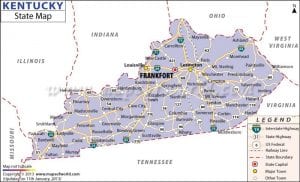
Although a slave state, Kentucky did not secede during the Civil War. It was a neutral state in the conflict, sending soldiers to both the Confederate and Union side. Both President Abraham Lincoln and Confederate President Jefferson Davis were born in Kentucky, just one year and 100 miles apart.
The state was initially known for its ideal farming conditions with landowners producing tobacco and hemp. Bourbon whiskey was created here in 1789 by a Baptist minister. Kentucky eventually became a horse breeding region due its abundance of pastures and the state’s refusal to make race track betting illegal as some Northeastern states did.
Coal mining began in the early 1900s as the railroads encroached deeper into the state.
After World War Two, Kentucky began to industrialize, but it wasn’t until 1970 that the state finally had more urban than rural residents.
Today, Kentucky remains a major producer of tobacco and coal, although coal production has declined significantly in recent years. The number of employees in the state’s coal industry fell from about 18,000 in 2010 to about 5,000 in 2022.
On the other hand, Kentucky remains second among states in tobacco production, behind only North Carolina.
The state also supplies 95 percent of the world’s bourbon whiskey.
However, the production of transportation equipment is actually Kentucky’s largest industry in terms of revenue. Tourism is its third largest.
The state’s nickname comes from the bluegrass found in lawns and pastures throughout the region. However, this natural terrain is declining due to development. The decrease prompted the World Monument Fund in 2006 to include the Bluegrass Region on its list of 100 most endangered sites on the planet.
You get to see some of this countryside as you continue north on Interstate 24.
——————————-
About 10 minutes after entering Kentucky, we grab Interstate 169 north for another 10-minute drive to the town of Hopkinsville in the southwest corner of the state.
This is the community where my grandfather grew up.
The region was claimed by Bartholomew Wood as part of a 1,200-acre grant for his service in the Revolutionary War. The town was founded in 1804 and named after General Samuel Hopkins, who fought in the American Revolution as well as the War of 1812.
The first railroad arrived in 1868. A second one came in 1892 and a third in 1903.
After the Civil War, Hopkinsville was one of the areas known for its dark-fired tobacco from the Black Patch region of the state. It was mostly used for chewing tobacco. It was so popular the American Tobacco Company was organized in an effort to drive down the price paid to farmers for their product.
In 1904, the Dark Tobacco District Planters Protective Association was formed to pressure farmers to accept the lower prices. Some growers refused, so the association organized a Night Riders group to terrorize farmers into submission. In 1907, 250 Night Riders took over the police department and burned tobacco warehouses. The Kentucky militia was called in and the Night Riders’ raids ended. Peace Park now stands on the site of one of those warehouses.
My grandfather moved to Hopkinsville in the early 1920s. He attended Virginia Street Elementary School and Belmont Street School. He went to Hopkinsville High School but dropped out in 9th grade to see if he could earn some money during the Great Depression.
After staying a while in town, Pops traveled the country as a teenager taking jobs that ranged from digging holes for power poles to operating the Ferris wheel for a traveling carnival. He finally joined the Navy, married my grandmother and settled in California. In his later years, he built homes in Central California after passing the state contractor’s license test at the age of 72.
Pops lived on Cherry Street in Hopkinsville in a white one-story house with green trim that is no longer there. It only had two bedrooms, so he slept on the couch to allow his sister, Dolores, to have the bedroom next to their parents’ room.
He remembered the town being on the edge of large tobacco fields. It had a Main Street with a bank and a drug store. His father worked for Forbes Manufacturing and was co-owner of a machine shop. Pops said his family wasn’t rich, but they never went hungry either.
Pops said Hopkinsville was a segregated town with separate neighborhoods, drinking fountains, restaurants and restrooms. The Ku Klux Klan was active and there were incidents of lynching. Pops remembered seeing the bodies of three Black men accused of raping a white girl hanging from a tree. One of Pops’ Black friends had a cross burned on his lawn.
Pops liked Hopkinsville. He spent a lot of his teen years at pool parlors and dance halls.
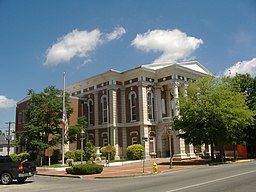
Hopkinsville, Kentucky, where my grandfather grew up. Photo by Zeph1.
He also spent a lot of time at a farm on the outskirts of town where his friend, Lee Adkins, lived. Pops would stay several days at a time there. Pops helped the farm hands separate cream from milk. His payment was he got to drink as much of the cream as he wanted.
One summer, Lee’s father let Lee and Pops plant their own tobacco crop on a small portion of the land. Mr. Adkins sold the tobacco that grew. He tried to give Pops part of the proceeds, but Pops’ father wouldn’t let him accept the money because of all the time he spent at the farm.
Hopkinsville still produces a lot of dark-fired tobacco along with wheat, corn and soybeans.
Ebonite International had a factory in town for decades that produced 60 percent of the world’s supply of bowling balls. The manufacturing facility closed in 2019 when the company moved its operations to Mexico.
However, a manufacturing base is starting to grow again in this town of 30,000 residents.
in March 2021, officials at Metalsa announced they were adding 97 jobs to the 600 existing positions at their Hopkinsville plant.
In August 2022, officials at Ascend Elements announced plans to build a lithium-ion battery materials facility here. A ground-breaking ceremony was held in October 2022 for the $1 billion plant that is expected to employ 400 people. In September 2023, company officials said they were partnering with South Korea-based SK ecoplant to construct a $65 million lithium battery recycling center in town.
Hopkinsville also has a Trail of Tears Commemorative Park to remember the federal relocation program that forced the Cherokee and other tribes to leave their land. The refugees were required to walk from their homeland to reservations in Oklahoma. One of those Trail of Tears paths went through Hopkinsville.
The park is the burial ground for two Cherokee chiefs, Fly Smith and Whitepath, who died during the trek. A plaque at the park remembers the suffering of the Cherokee people during the forced relocation. The Trail of Tears Pow Wow group visits this park every September.
Horses, Boxing and Baseball
From Hopkinsville, it’s a 2 ½ drive northeast along Highways 41 and 62 and northbound Interstate 65 before we reach our final destination.
Along the way, we once again enter the Eastern Time Zone, a region we will be in for the next 18 days.
Right before we get to Louisville, we pass in the vicinity of Fort Knox, Kentucky.
The Army base sits 35 miles south of Louisville. It’s 109,000 acres and is actually certified as its own city that overlaps into three counties.
The main base houses more than 26,000 soldiers, family members and civilian employees.

Some of the gold bars stored at the United States Bullion Depository at Fort Knox, Kentucky.
The base was named after Henry Knox, the country’s first secretary of war. It has been a vital military installation since the Civil War. Once home to the U.S. Army Armor Center for six decades, the base is now used mostly for training, including summer programs for ROTC cadets across the country.
However, Fort Knox is probably best known for its proximity to the United States Bullion Depository, home to most of the country’s gold supply.
The facility was built in 1936 and the first shipment of gold arrived in 1937.
The gold in the depository are bars of melted precious metal about the size of a normal brick – 7 inches in length, 3 ½ inches in width and 1 ¾ inches in thickness. They contain about 400 troy ounces of gold each. They weigh about 27 pounds apiece. There are a handful of gold coins alongside the bars, too.
There is a lot of secrecy surrounding the facility, which is operated by the U.S. Mint.
The U.S. Bullion Depository stores a gold supply reported to be 147 million ounces with an estimated value of $270 billion. The rest of the country’s gold is housed at mints in Philadelphia, Denver, West Point in New York and San Francisco.
Not surprisingly, security is top of the line with state-of-the-art technology. The facility is protected by federal police officers selected by the U.S. Mint. The actual structure and content of the complex is known by only a few people and no one person knows all the procedures to open the gold vault.
The depository is bomb proof. It’s so secure that during World War Two it was used to store the original copies of the Declaration of Independence and U.S. Constitution as well as the original draft of President Abraham Lincoln’s Gettysburg address.
Not surprisingly, no visitors are allowed, so we plow ahead on I-65 to our overnight stop.
————————————-
Louisville sits along the Ohio River at the Indiana border. It’s the most populous city in Kentucky with 616,000 people.
If you like sports, Louisville isn’t a bad place to be. It has the country’s most famous horse racetrack along with a baseball bat factory and a museum dedicated to a native son who grew up to be one of the greatest boxers of all time.
The community was established by Colonel George Rogers in 1778, making Louisville one of the oldest cities west of the Appalachians. It was named after King Louis XVI of France whose soldiers had helped the colonies in the Revolutionary War.
Louisville grew due to a quirk in the Ohio River.
The city is situated at the Falls of the Ohio. The rapids are the only major impediment to river traffic from the Upper Ohio River to the Mississippi River. Due to the falls, boats had to be unloaded and then transported down river before continuing.
This natural barrier encouraged settlers to establish a community with a shipping port. Slaves worked at the docks and some escaped across the river to Indiana, a free state. In 1830, a canal was opened that bypassed the falls. Nonetheless, Louisville remains a shipping center to this day.
Louisville was the founding city of the Louisville and Nashville Railroad, which was chartered in 1850 and eventually grew into a 6,500-mile network that covered 13 states.
During the Civil War, Louisville became a stronghold for Union troops who set up a supply depot and took advantage of the city’s waterways.
In 1888, Louisville became one of the first cities to use secret ballots in elections. Before this change, preprinted ballots handed out by political parties to voters were the norm.
In 1914, Louisville adopted a racially based residential zoning code that prohibited Blacks from moving into predominately white neighborhoods and vice versa. The U.S. Supreme Court struck down that law in 1917, but Louisville still struggles with racial issues. A 2021 report stated that the city remains deeply segregated.
Racial tension has been high in the city the past four years after the shooting death of Breonna Taylor, a 26-year-old Black emergency medical technician, by Louisville police officers during a botched narcotics raid on her apartment in March 2020.
One of the three officers involved in the raid was charged with firing shots into a neighboring unoccupied apartment. In March 2022, a jury found that officer, Brett Hankison, not guilty on three counts of wanton endangerment. A federal trial to determine whether Hankison violated Taylor’s civil rights began in October 2023. That trial ended in a hung jury and a new trial has been tentatively scheduled for October 2024.
However, none of the three officers were charged in Taylor’s death. The three officers connected to the raid were terminated from the Louisville police force. In August 2022, a fourth officer was fired two weeks after federal charges were filed against four officers involved in the shooting.
City officials have also banned no-knock warrants. However, Taylor’s family says justice still has not been served.
During World War Two, Louisville was a war production center. The Curtiss-Wright Corporation, co-founded by the Wright Brothers, built the Curtiss-46 Commando in Louisville. After the war in 1946, the factory was sold to International Harvester for tractor production. That facility operated until 1983. The city was also once the world’s largest producer of synthetic rubber.
Shipping and cargo remain mainstays of the economy, although it is more diverse than in decades past.
Worldport is the worldwide air hub for United Parcel Service. The 5-million-square-foot complex located at Louisville International Airport is the largest automated package handling facility in the world. In a typical year, it handles 2 million packages per day, a load that increases to 4 million during the December holiday period. More than 300 UPS planes depart and arrive daily.
In December 2020, Worldport was where the first batches of Pfizer’s COVID-19 vaccine landed. The vaccines were then delivered by UPS trucks to more than 600 locations in the eastern half of the county.
The city also has a Ford assembly plant that employs more than 4,000 people. The 180-acre complex, which opened in 1955, currently produces the Ford Escape and Lincoln Corsair. The factory is expected to start manufacturing electric vehicles in 2025.
Ford also operates the Kentucky Truck Plant adjacent to the assembly factory. This 500-acre complex, which opened in 1969, employs nearly 9,000 people. The Ford F-250 is among the trucks manufactured here. In September 2022, Ford executives announced a $700 million expansion to the factory that will create 500 new jobs producing the new F-Series Super Duty truck.
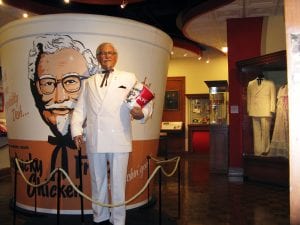
The KFC Museum in Louisville, Kentucky. Photo by Food & Wine Magazine.
GE Appliances has its headquarters in Louisville with a “microfactory” operated by subsidiary FirstBuild. A $62 million expansion at the 750-acre complex was announced in July 2020 to accelerate production of washers, dryers, refrigerators and dishwashers. Another $80 million expansion was unveiled in December 2020 to the facility’s dishwasher manufacturing facility.
Louisville is also the headquarters for KFC, once known as Kentucky Fried Chicken. There’s even a museum that spotlights the fast-food product invented by Colonel Harland Sanders, an Indiana native who first sold his chicken in the 1930s from his service station in Kentucky. He eventually moved to a restaurant across the street. Sanders awarded his first franchise in 1952 to a Salt Lake City restaurant owner. He continued to negotiate franchises in which he was paid a nickel for every chicken order. In 1964, Sanders sold his interest in the company, but he continued to appear as a spokesman for the product.
The KFC museum was established in 1978. It contains footage of old KFC commercials, the colonel’s first cooking pot and a restored version of Sanders’ first restaurant. Sanders died in Louisville in 1980 at the age of 90.
Kentucky bourbon is also an important sector of the economy in Louisville. Brown-Forman, the largest spirit and wine company in the United States that sells Jack Daniel’s whiskey and other products in 170 countries, has its headquarters here. The company was founded in 1870 and employs about 1,300 people in Louisville.
The city even has an Urban Bourbon Trail where you can visit 46 bars and restaurants to sample the hard liquor. You can also learn some history about bourbon in Louisville, including the “Whiskey Row” the city had before the 1920s where 50 distilleries were active.
In 2014, the Big Four Pedestrian Bridge reopened. The former railroad span is now exclusively for bicycle and pedestrian use. The 2,562-foot-long bridge crosses over the Ohio River and connects Louisville with Jeffersonville, Indiana. It was originally built in 1895 and gets its name from the “big four” railroad companies that used it.
The bridge isn’t the only new addition to the downtown area.
Since the 1980s, older neighborhoods have been converted into housing and office developments in an attempt to lure young professionals. Code Louisville is part of that appeal. The program was started in 2014 as a way to recruit and train software development engineers for jobs in town. The education includes a free 12-week training course. So far, Code Louisville had placed more than 800 of its graduates into technology careers.
The city is also home to one of the most respected newspapers in the country, the Louisville Courier-Journal. The newspaper has won 11 Pulitzer Prizes, including one in 2020 for its coverage the previous year of a rash of last-minute pardons handed out by outgoing Kentucky Governor Matt Bevin.
One of the issues confronting Louisville today is violent crime. There were 188 homicides in Louisville in 2021, a record high and almost 40 more than the 150 recorded in 2020. In 2022, there were 160 homicides reported. In 2023, 150 homicides were recorded.
There have been concerted efforts in recent years to revitalize the downtown area of Louisville with new retail establishments and housing units.
As part of that redevelopment, Waterfront Park was dedicated in 1999. The area along the Ohio River is known as “Louisville’s front lawn.” It hosts concerts and includes sports complexes such as Louisville Slugger Field, home of the Louisville Bats minor league baseball team, and the KFC Yum! Center, the site of basketball games and musical events.
That leads us into three major sports-related facilities in Louisville.
Since we’re talking baseball, let’s start with the Louisville Slugger Museum & Factory. The company began making baseball bats here in 1884 out of a woodworking shop. The story goes that the first bat was made by 17-year-old Bud Hillerich for Pete Browning of Louisville’s major league team, the Eclipse. Browning, whose nickname was the Louisville Slugger, got three hits the first day he used the bat.
Bud convinced his father to start producing bats instead of butter churns. In 1894, they trademarked the “Louisville Slugger” brand. In 1905, Honus Wagner, the Hall of Fame infielder for the Pittsburgh Pirates, signed a one-year contract to endorse the bat, the first time a professional athlete put their name to a product.
Since then, more than 8,000 professional baseball players have signed on with Louisville Slugger. The autograph on the bats is taken from the signature on their contract.
The company now makes 1.8 million bats a year. There are 300 popular models from which players choose. On average, players order 120 bats per season. Most of the wood comes from 6,500 acres of timberland in Pennsylvania and New York.
The Louisville factory/museum building is still owned by Hillerich & Bradsby Company, but the Louisville Slugger brand was sold to Wilson Sporting Goods in 2015.
The facility still produces about 3,000 full-sized bats per day, but the building is now primarily a museum.
Outside sits the world’s largest baseball bat. It’s an oversized replica of a Babe Ruth’s 34-inch Louisville Slugger. The bat is made of steel and is 120 feet high and weighs 68,000 pounds. There’s also a 17-ton sculpture of a large baseball glove made of limestone.

The Muhammad Ali Center in Louisville, Kentucky. Photo by Joy of Museums Virtual Tours.
Inside the complex are factory tours, a signature wall, a vault with 3,000 bats and, of course, a batting cage.
Not too far away is the Muhammad Ali Center. The facility, which opened in 2005, showcases the life and career of the famed boxer as well as his six core principles.
Muhammad Ali was born in 1942 in Louisville with the birthname of Cassius Marcellus Clay Jr. He started taking boxing lessons in a Louisville gym at age 12. Ali fought in the amateur ranks, winning a gold medal in the light heavyweight division at the 1960 Olympics when he was 18 years old.
He turned professional later that year and won 19 straight bouts before defeating Sonny Liston to win the heavyweight championship in February 1964.
Soon after, Ali joined the Nation of Islam and changed his birth name to the name he was known by the rest of his life. In 1967, Ali was drafted into the military, but he refused to serve, saying his religious beliefs prohibited him from fighting in a war. He was convicted of violating military draft laws, a conviction that was overturned in 1971.
During the legal proceedings, Ali was not allowed to box professionally. He was inactive for three prime years of his career. He returned in 1970, only to lose in a celebrated bout in 1971 against heavyweight champion Joe Frazier.
Ali eventually won back the title with a victory over champion George Foreman in 1974. He retired in 1981 with a career record of 56 wins and 5 losses.
In 1984, Ali announced he had been diagnosed with Parkinson’s disease. Despite his condition, Ali remained active in social and charitable causes. He died in 2016 at the age of 74.
The 24,000-square-foot center that Ali co-founded includes a theater, exhibits, gallery and a recreated boxing ring. It’s located in the heart of downtown along the Ohio River.
Finally, outside of downtown, is perhaps the best known of Louisville’s landmarks.
The Churchill Downs racetrack, home of the Kentucky Derby, has been here since 1875, when it hosted the first “Run for the Roses.”
The race features 20 horses, a much larger field than the 8 competitors you see at a typical horse race. The horses are selected using a point system for the top four finishers in a series of 35 races held at tracks across the country during the year. The owner of the winning Derby horse receives a $2 million prize. The “Most Exciting Two Minutes in Sports,” as the Derby is called, is the longest continuously held sporting event in the United States.
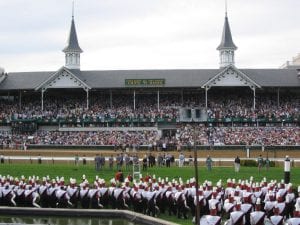
The Churchill Downs racetrack in Louisville where the Kentucky Derby horse race is held every year. Photo by WKMS.
The race is usually held on the first Saturday in May on Churchill Downs’ one-mile dirt oval track.
Churchill Downs is busy the rest of the year, too.
The 147-acre complex is the site of thoroughbred racing in the spring, summer and fall. It houses 5,000 horses as well as the Kentucky Derby Museum.
However, the Kentucky Derby is still the prime attraction every year. There is nearly a month of celebration leading up to the race that includes parades, fireworks, music and steamboat races. On Derby Day, more than 165,000 people crowd into the racetrack in a typical year.
There is plenty of Southern charm on display from fancy outfits to mint juleps to big hats.
Louisville has its Southern influence outside of the race track, too.
The Old Fashioned cocktail was invented at the Pendennis Club, a private men’s club that was established in the downtown area in 1881. The club’s first headwaiter, Henry Bain, is credited with inventing the bourbon-based drink. One theory is the name of the cocktail came from people ordering a drink “made the old fashioned way.”
Docked along the river banks is the Belle of Louisville, the oldest Mississippi River steamboat still in operation. It’s been cruising the local waters since 1914.
We’ll see a lot more of Kentucky tomorrow before we head into the state immediately to its east.
Get ready for some horseback riding, glee club singing and some serious discussions of opioids and coal mining.

